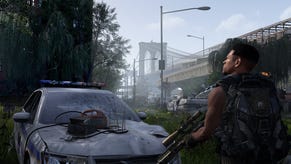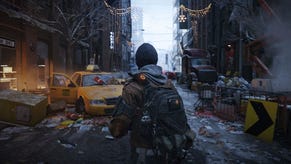The Division 2's next-gen upgrade is impressive - but something's up with PS5
60fps is transformative but visual effects are missing on the Sony console.
On the face of it, The Division 2's upgrade for next generation consoles should be fairly simple to describe, with wholly predictable results. Similar to titles like God of War and Days Gone, the last-gen codebase is updated with the game aware it's running on new hardware, unlocking the frame-rate in the process. The end result should be a capped 30fps experience now running at 60 frames per second - or close to it - with little or nothing else changed in the process. That's effectively what you're getting on Xbox Series X, but something is definitely amiss with the PS5 build, which is missing important graphics effects - visual features that aren't just present on Xbox consoles, but on PS4 Pro too.
But still, the headline is that all versions now run at 60fps, lifting the 30fps cap from the last-gen experience. It feels vastly smoother of course, transformative for a third person shooter, and there are improvements to loading times too - plus improved texture filtering on Xbox Series consoles. In terms of resolutions, The Division 2 retains the game's impressive temporal reconstruction technique, meaning we had to jump through hoops somewhat to discern actual native pixel counts. Dynamic resolution is in play on all systems, meaning that the 60fps action is delivered with a 900p to 1080p resolution range on Xbox Series S, rising to a 1800p-2160p range on Series X. Meanwhile, PlayStation 5 operates with a much wider range - 1080p is seemingly the lowest recorded resolution, rising to a maximum of 1890p.
Graphics settings on the Xbox consoles look to be a close match to the last-gen Xbox One X, but the move to solid-state storage and improved CPUs boosts the efficiency of the background streaming systems, with texture and geometry pop-in minimised to a certain extent - good stuff! In effect, Xbox Series consoles essentially get the game-changing boost in frame-rate married with additional visual refinements, mostly delivered by the system level back-compat feature set and the raw horsepower of the new hardware.
It's when we look at PlayStation 5 more specifically that the situation takes a turn for the stranger. Whether there are issues in the cross-platform SDK or simply bugs that somehow made it through QA, it's clear that this rendition of the game isn't quite where it should be. Simply put we're seeing a regression in visual features that are present on the Xbox consoles - and crucially, these visual effects are even still present on PS4 Pro, which is running on the same codebase. The most dramatic change is the total omission of volumetric lighting and atmospheric rendering: the fog effect streaming from lamps is removed on PS5, something the Snowdrop engine is famous for showcasing. Smoke haze is missing. Also, interiors lose volumetric lighting. PS5 is now a 60fps game but you're losing a big chunk of the atmosphere and it's hard to believe that this an intentional effect.
Not quite as important to the presentation, but still noteworthy, is the fact that screen-space reflections are also missing on PlayStation 5. Again, they are present on PlayStation 4 Pro and the other systems. In their place you'll only see simple and static cube-map effects - usually just the fallback for reflections when screen-space data isn't available. The final mystery concerns loading times - we get a dramatic improvement on Xbox Series consoles compared to Xbox One X, but curiously, the PS5 lags behind other next-gen machines by a few seconds when loading the same content. It's a bit of a mystery as, usually, the Sony console is on par or at least faster.
The good news is that the 60 frames per second update is well met on all of the systems and perhaps because of its slightly lower resolution and pared back effects, PlayStation 5 sticks most doggedly to its 60fps performance target. Meanwhile, Xbox Series X and Series S consoles appear to drop some frames when there's a lot of transparency effects work on screen. The junior Series S has one third of the overall compute power, responsible for just one quarter of the Series X's target resolution so this does mean that the lower spec box can deliver a more consistent level of performance overall than its bigger brother, but there's not much in it really.
All told, the 60fps experience is excellent and in common with similar next-gen updates, it's hard to go back. It's a simple way to tap into the horsepower of the new machines, but it's also the most potent upgrade Ubisoft could have delivered. If you've upgraded to the new consoles and you own the game, we highly recommend checking it out - but let's hope that Ubisoft can look into the PS5 issues and restore the full range of effects to the game.








